Something very exciting took place on 27 January 1866, the 110th anniversary of Wolfgang Amadeus Mozart’s birth. The city of Frankfurt witnessed the performance of an unknown Singspiel, which Mozart had abandoned to work on Idomeneo. The unknown work carried a title supplied by the Mozart researcher Johann Anton André, who had completed the work and first published the score.
Wolfgang Amadeus Mozart: Symphony No. 32 in G Major, “Allegro”
The work was called Zaide (The Seraglio), and the unfinished score found after Mozart’s death by his widow Constanze. It took a while for some of fragments to be published, and besides André, a couple of modern composers have completed the work, including Luciano Bario and Harvard Professor Chaya Czernowin.
Wolfgang Amadeus Mozart: Zaide, K. 344 – Act I: Chorus: Bruder, lasst uns lustig sein (Sophie Bevan, soprano; Allan Clayton, tenor; Jacques Imbrailo, baritone; Stuart Jackson, tenor; Darren Jeffery, bass-baritone; Jonathan McGovern, baritone; Peter Aisher, tenor; Robin Bailey, tenor; Simon Chalford Gilkes, tenor; Edward Hughes, tenor; Stuart Laing, tenor; Nick Morton, bass; Dominic Walsh, tenor; Orchestra of Classical Opera; Ian Page, cond.)
The Background
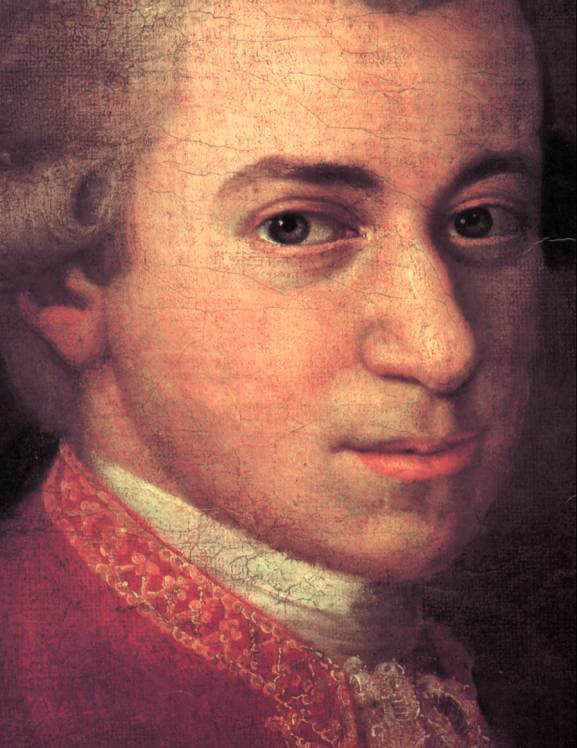
Portrait of Mozart by Johann Nepomuk della Croce
Mozart was, perhaps, the greatest musical mind that ever lived. But that does not mean that he had an easy time getting employment or finding acceptance. As a child prodigy he traversed Europe but steady employment somehow never materialised. For one reason or another, his efforts were thwarted by intrigue, jealousy, and a good deal of ignorance. And the incomplete composition of Zaide falls into a particularly trying period during Mozart’s life.
Wolfgang Amadeus Mozart: Zaide, K. 344 – Act I: Melolog: Unerfoschliche Fugung! (Sophie Bevan, soprano; Allan Clayton, tenor; Jacques Imbrailo, baritone; Stuart Jackson, tenor; Darren Jeffery, bass-baritone; Jonathan McGovern, baritone; Peter Aisher, tenor; Robin Bailey, tenor; Simon Chalford Gilkes, tenor; Edward Hughes, tenor; Stuart Laing, tenor; Nick Morton, bass; Dominic Walsh, tenor; Orchestra of Classical Opera; Ian Page, cond.)
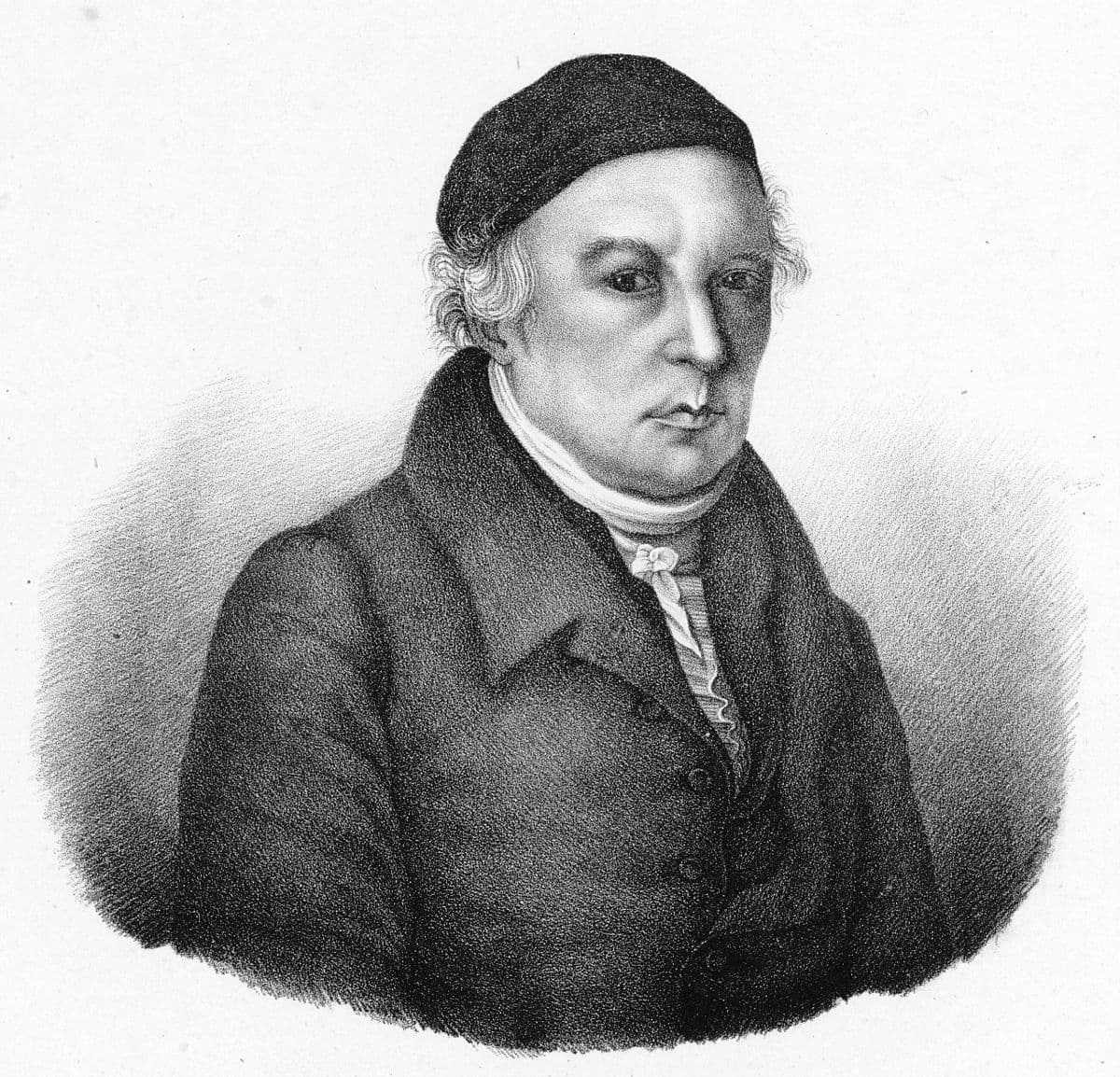
Johann Anton André
Between September of 1777 until the beginning of 1779 Mozart travelled to Paris via Munich and Mannheim before returning to Salzburg utterly discouraged. In Munich he had dreamed of “helping to raise the standards of the German musical theatre,” in Manheim he implored his father to secure an Italian project, and in Paris he learned that the Royal Court in Vienna was looking for a composer of German “Singspiele.”
Wolfgang Amadeus Mozart: Zaide, K. 344 – Act I: Aria: Ruhe sanft, mein holdes Leben (Sophie Bevan, soprano; Allan Clayton, tenor; Jacques Imbrailo, baritone; Stuart Jackson, tenor; Darren Jeffery, bass-baritone; Jonathan McGovern, baritone; Peter Aisher, tenor; Robin Bailey, tenor; Simon Chalford Gilkes, tenor; Edward Hughes, tenor; Stuart Laing, tenor; Nick Morton, bass; Dominic Walsh, tenor; Orchestra of Classical Opera; Ian Page, cond.)
A Singspiel Project
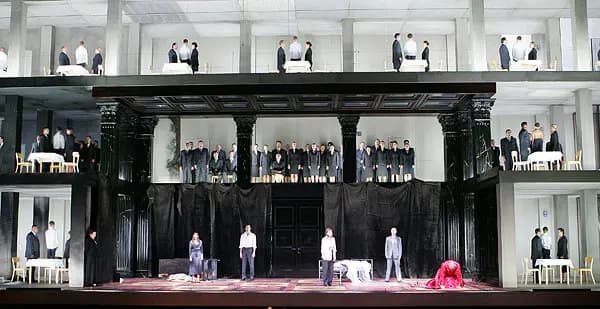
Mozart’s Zaide at Salzburg Festival
Once he returned to the provincial Salzburg Court, he was looking to compose an opera for Munich or Salzburg. Hearing anew about the theatrical project sponsored by the Holy Roman Emperor Joseph II, with the specific goal of encouraging German-language opera in Austria, Mozart set to work on a Singspiel, a genre he had experimented with in the past.
Wolfgang Amadeus Mozart: Zaide, K. 344 – Act I: Aria: Rase, Schicksal, wute immer (Sophie Bevan, soprano; Allan Clayton, tenor; Jacques Imbrailo, baritone; Stuart Jackson, tenor; Darren Jeffery, bass-baritone; Jonathan McGovern, baritone; Peter Aisher, tenor; Robin Bailey, tenor; Simon Chalford Gilkes, tenor; Edward Hughes, tenor; Stuart Laing, tenor; Nick Morton, bass; Dominic Walsh, tenor; Orchestra of Classical Opera; Ian Page, cond.)
We are not sure how it all came about, but Mozart probably consulted Johann Andreas Schachtner, an old friend of the family and trumpet player. Schachter had earlier written the libretto for Bastien and Bastienne for him, and he now prepared a Turkish fairy tale. In times of political and cultural tensions, such subjects were incredibly popular. Generally, the subject revolved around imprisoned and enslaved Westerners held at Muslim courts and brave attempts, often motivated by love, to rescue them.
Wolfgang Amadeus Mozart: Zaide, K. 344 – Act I: Duet: Meine Seele hupft vor Freuden (Sophie Bevan, soprano; Allan Clayton, tenor; Jacques Imbrailo, baritone; Stuart Jackson, tenor; Darren Jeffery, bass-baritone; Jonathan McGovern, baritone; Peter Aisher, tenor; Robin Bailey, tenor; Simon Chalford Gilkes, tenor; Edward Hughes, tenor; Stuart Laing, tenor; Nick Morton, bass; Dominic Walsh, tenor; Orchestra of Classical Opera; Ian Page, cond.)
The Story
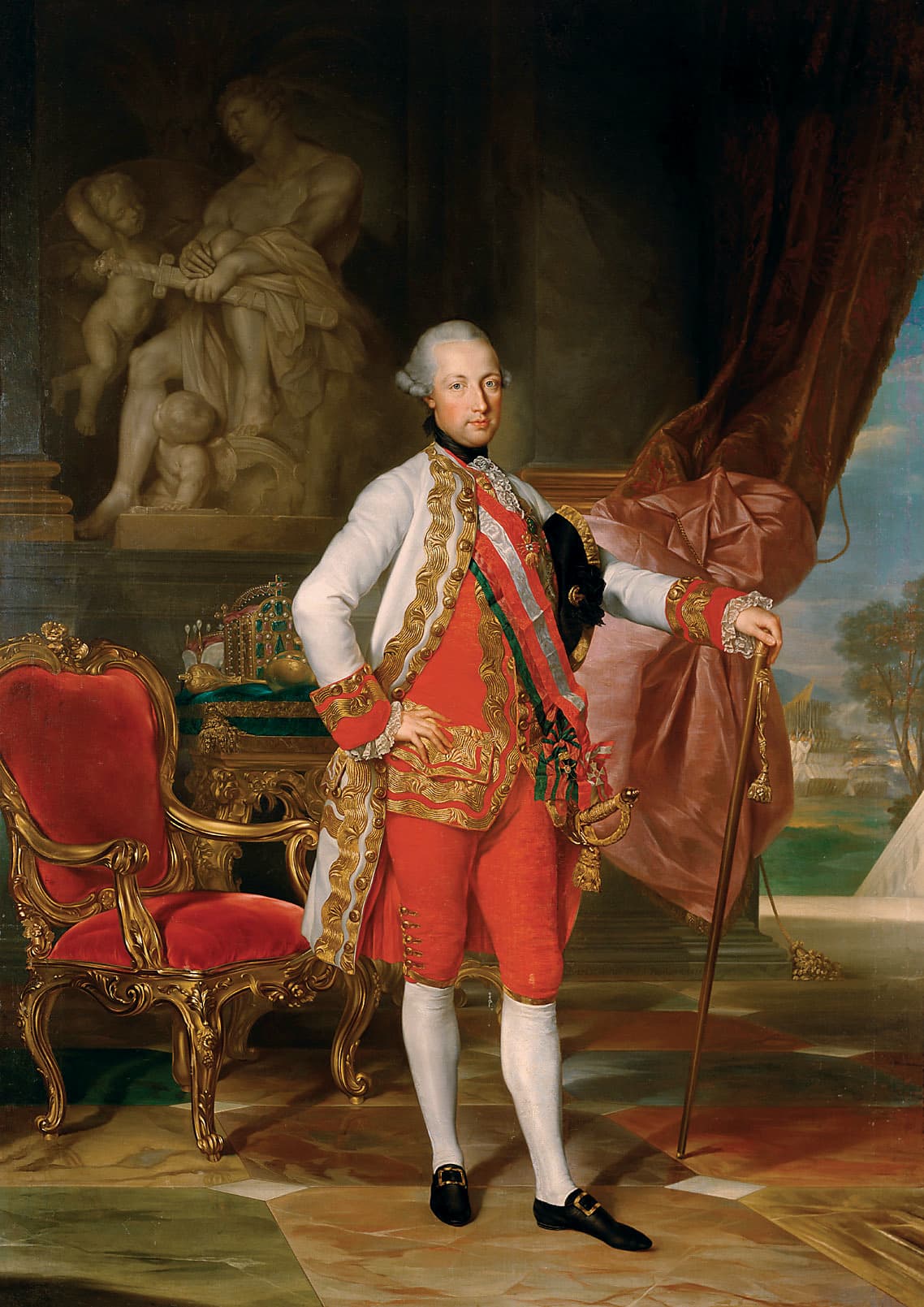
Emperor Joseph II
Set at a Muslim court in Turkey, the opening act introduces us to the slaves cheerfully finishing work for the day. The young hero Gomatz, exiled and enslaved, bitterly laments his fate, and as he lays down to sleep, he is carefully watched by the slave Zaide. She is another Western slave and the beautiful favourite of the Sultan’s harem. She leaves her portrait and a jewel with the sleeping hero, and once he awakens it inspires Gomatz to defy the raging of fate. Zaide reveals herself and they declare their mutual love.
Wolfgang Amadeus Mozart: Zaide, K. 344 – Act I: Aria: Herr und Freund, wie dank ich dir! (Sophie Bevan, soprano; Allan Clayton, tenor; Jacques Imbrailo, baritone; Stuart Jackson, tenor; Darren Jeffery, bass-baritone; Jonathan McGovern, baritone; Peter Aisher, tenor; Robin Bailey, tenor; Simon Chalford Gilkes, tenor; Edward Hughes, tenor; Stuart Laing, tenor; Nick Morton, bass; Dominic Walsh, tenor; Orchestra of Classical Opera; Ian Page, cond.)
The overseer Allazim, appointed by the slave-handler Osmin, decides to betray the Sultan and helps to prepare their escape. Gomatz thanks him profusely, and although the sea is calm at sunrise, Zaide images bad weather on the horizon. At the beginning of Act 2, we find Sultan Soliman raging in a melodrama. Zaide has spurned his love and decided to flee with a Christian slave. While Soliman rails against all women, an officer tells them that their recapture is imminent.
Wolfgang Amadeus Mozart: Zaide, K. 344 – Act I: Aria: Nur mutig, mein Herze, versuche dein Gluck! (Sophie Bevan, soprano; Allan Clayton, tenor; Jacques Imbrailo, baritone; Stuart Jackson, tenor; Darren Jeffery, bass-baritone; Jonathan McGovern, baritone; Peter Aisher, tenor; Robin Bailey, tenor; Simon Chalford Gilkes, tenor; Edward Hughes, tenor; Stuart Laing, tenor; Nick Morton, bass; Dominic Walsh, tenor; Orchestra of Classical Opera; Ian Page, cond.)
Soliman is determined to avenge the betrayal with the death of all three conspirators. Zaide pleads with him that a caged nightingale sings only of her sorrow. When Soliman is unmoved, she turns to attack him in splendid fury, looking forward to release through death. Allazim, who once saved Soliman’s life cannot sway the Sultan’s fury either.
Wolfgang Amadeus Mozart: Zaide, K. 344 – Act I: Trio: O selige Wonne (Sophie Bevan, soprano; Allan Clayton, tenor; Jacques Imbrailo, baritone; Stuart Jackson, tenor; Darren Jeffery, bass-baritone; Jonathan McGovern, baritone; Peter Aisher, tenor; Robin Bailey, tenor; Simon Chalford Gilkes, tenor; Edward Hughes, tenor; Stuart Laing, tenor; Nick Morton, bass; Dominic Walsh, tenor; Orchestra of Classical Opera; Ian Page, cond.)
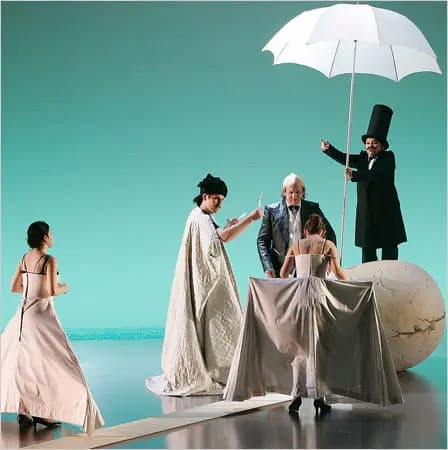
Mozart’s Zaide at Salzburg Festival
Gomatz asks Zaide to calm her tears, as death will crown their love. Allazim, moved to tears, takes the blame and Zaide pleads for Gomatz’s life. Soliman, however, remains vindictive, and this brings us to the conclusion of Act II, and the end of Mozart’s music. In the libretto, however, Soliman eventually grants the lovers their freedom. As they return to Europe, they testify to the fact that “also Asians can bring forth souls of virtue.”
Wolfgang Amadeus Mozart: Zaide, K. 344 – Act II: Melologue and Aria: Zaide entflohen! (Sophie Bevan, soprano; Allan Clayton, tenor; Jacques Imbrailo, baritone; Stuart Jackson, tenor; Darren Jeffery, bass-baritone; Jonathan McGovern, baritone; Peter Aisher, tenor; Robin Bailey, tenor; Simon Chalford Gilkes, tenor; Edward Hughes, tenor; Stuart Laing, tenor; Nick Morton, bass; Dominic Walsh, tenor; Orchestra of Classical Opera; Ian Page, cond.)
Musical Style
Although the work remained unfinished, Zaide is considered a “testing ground for many musical-dramatic experiments that were to find a permanent place in Mozart’s distinctive operatic style. Innovations in text-setting, aria forms and musical characterization, set Zaide apart from earlier opera and testified to a new stage in the composer’s operatic thinking.” For a good many observers Zaide is highly significant in the development of Mozart’s operatic voice.
Wolfgang Amadeus Mozart: Zaide, K. 344 – Act II: Aria: Der stolze Low’ lasst sich zwar zahmen (Sophie Bevan, soprano; Allan Clayton, tenor; Jacques Imbrailo, baritone; Stuart Jackson, tenor; Darren Jeffery, bass-baritone; Jonathan McGovern, baritone; Peter Aisher, tenor; Robin Bailey, tenor; Simon Chalford Gilkes, tenor; Edward Hughes, tenor; Stuart Laing, tenor; Nick Morton, bass; Dominic Walsh, tenor; Orchestra of Classical Opera; Ian Page, cond.)
To be sure, Zaide contains elements of both opera buffa and opera seria, and it is notable for being one of the only two dramatic pieces by Mozart to contain melodrama. This theatrical device, revived in 18th century French romantic drama and sentimental novels, typically concentrate on dialogue that is “often bombastic and sentimental, rather than action, with characters written to fulfil stereotypes.” For Mozart, it was a technique of combining spoken recitation with short pieces of accompanying music. Sadly, most of the spoken dialogue to Zaide has been lost, but Gomatz’s entry in the opening act is considered “Mozart’s greatest melodrama.”
Wolfgang Amadeus Mozart: Zaide, K. 344 – Act II: Aria: Wer hungrig bei der Tafel sitzt (Sophie Bevan, soprano; Allan Clayton, tenor; Jacques Imbrailo, baritone; Stuart Jackson, tenor; Darren Jeffery, bass-baritone; Jonathan McGovern, baritone; Peter Aisher, tenor; Robin Bailey, tenor; Simon Chalford Gilkes, tenor; Edward Hughes, tenor; Stuart Laing, tenor; Nick Morton, bass; Dominic Walsh, tenor; Orchestra of Classical Opera; Ian Page, cond.)
Arias
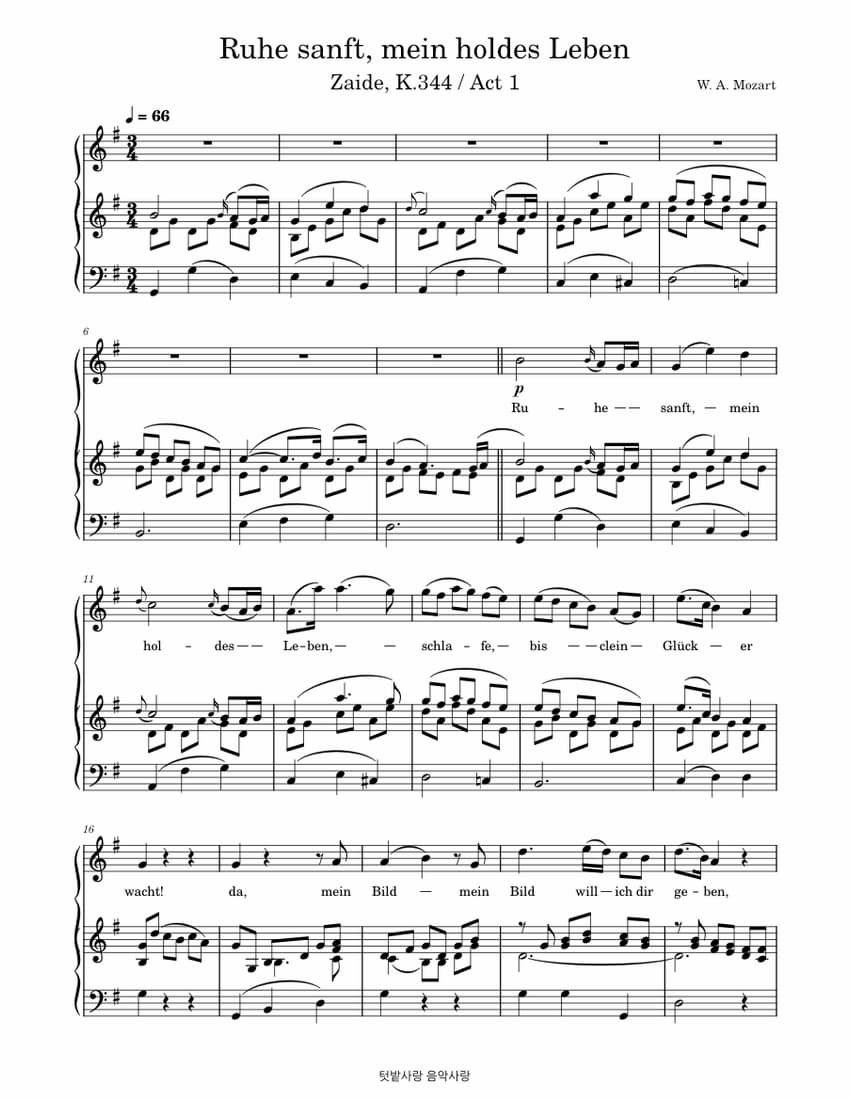
Mozart’s opera Zaide music score
The arias, rather than the melodramas, ensembles or the chorus, are most appropriate in finding a comparison to the operas Mozart composed before and after. Musically, Mozart found his first three-dimensional character in Zaide. In her arias, Mozart demonstrates “substantial innovations in the areas of orchestral ritornellos and introductions, text distribution, phrase structures, melodic and key relationships between sections, displacement and highlighting of modulatory passages, and individuation of aria forms.”
In her role, Zaide covers an emotional range and diversity that is unique among Mozart heroines. As the sole female voice in the Singspiel as it survives, Mozart gives her the task of “taming the opera’s testosterone-driven madness with level-headed femininity.” Her best-known aria is the gracefully scored “Ruhe sanft, mein holdes Leben,” and the character is unafraid of bold gestures and resilience. Scholars and critics see “Zaide” as the catalyst for the entire drama, “and the heart that beats within this captivating musical torso.”
Wolfgang Amadeus Mozart: Zaide, K. 344 – Act II: Aria: Ich bin so bos als gut (Sophie Bevan, soprano; Allan Clayton, tenor; Jacques Imbrailo, baritone; Stuart Jackson, tenor; Darren Jeffery, bass-baritone; Jonathan McGovern, baritone; Peter Aisher, tenor; Robin Bailey, tenor; Simon Chalford Gilkes, tenor; Edward Hughes, tenor; Stuart Laing, tenor; Nick Morton, bass; Dominic Walsh, tenor; Orchestra of Classical Opera; Ian Page, cond.)
Fate of the Singspiel
The Zaide Project occupied nearly three years of Mozart’s life, but only the arias and ensembles from the first two acts were composed. He had not yet composed the overture, and was looking to add an Act III. Well, why didn’t he? For one, he had received the commission for Idomeneo from Munich in the meantime, and by 1780 he was busy rehearsing that particular opera. Mozart urged his father to bring the operetta by Schachtner to Munich, but there were complications.
Wolfgang Amadeus Mozart: Zaide, K. 344 – Act II: Aria: Trostlos schluchzet Philomele (Sophie Bevan, soprano; Allan Clayton, tenor; Jacques Imbrailo, baritone; Stuart Jackson, tenor; Darren Jeffery, bass-baritone; Jonathan McGovern, baritone; Peter Aisher, tenor; Robin Bailey, tenor; Simon Chalford Gilkes, tenor; Edward Hughes, tenor; Stuart Laing, tenor; Nick Morton, bass; Dominic Walsh, tenor; Orchestra of Classical Opera; Ian Page, cond.)
As Leopold Mozart wrote, “As far as Schachtner’s drama is concerned, there is nothing we can do at the moment since the theatres are closed (due to Empress Maria Theresa’s death) and the Emperor, who takes a personal hand in all matters concerning the theatre, cannot be approached in this respect. It is all for the best since the music is not yet finished anyway, and who knows what kind of opportunity to come to Vienna for this reason will present itself in due course.”
Wolfgang Amadeus Mozart: Zaide, K. 344 – Act II: Aria: Tiger! Wetze nur die Klauen (Sophie Bevan, soprano; Allan Clayton, tenor; Jacques Imbrailo, baritone; Stuart Jackson, tenor; Darren Jeffery, bass-baritone; Jonathan McGovern, baritone; Peter Aisher, tenor; Robin Bailey, tenor; Simon Chalford Gilkes, tenor; Edward Hughes, tenor; Stuart Laing, tenor; Nick Morton, bass; Dominic Walsh, tenor; Orchestra of Classical Opera; Ian Page, cond.)
Coda
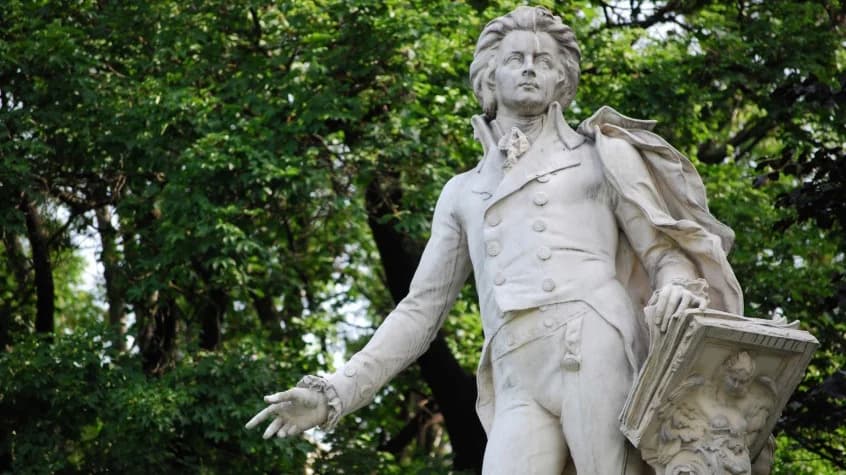
Mozart monument © iStockphoto
Several months after the Idomeneo premiere, Mozart arrived in Vienna as part of the archbishop’s entourage. He had the two finished acts of Zaide in his back pocket and was looking to secure a commission to finish the work. However, as he writes to his father, “nothing can be done because of the same reason that I have so often mentioned. The young Stephanie (Austrian playwright, director and librettist) is going to give me a new piece, as he says, a good piece.”
Wolfgang Amadeus Mozart: Zaide, K. 344 – Act II: Aria: Ihr Machtigen seht ungeruhrt (Sophie Bevan, soprano; Allan Clayton, tenor; Jacques Imbrailo, baritone; Stuart Jackson, tenor; Darren Jeffery, bass-baritone; Jonathan McGovern, baritone; Peter Aisher, tenor; Robin Bailey, tenor; Simon Chalford Gilkes, tenor; Edward Hughes, tenor; Stuart Laing, tenor; Nick Morton, bass; Dominic Walsh, tenor; Orchestra of Classical Opera; Ian Page, cond.)
Having been rejected by Stephanie, Mozart permanently shelved Zaide, however, Stephanie did keep his promise. He provided Mozart with the libretto for The Abduction from the Seraglio, which was first staged in July 1782. If you know that particular work, you will undoubtedly recognise the striking resemblance to Zaide. Zaide is a work well worth performing, even if some editorial revisions are necessary in order to bring it to the stage. As Julian Rushton writes, “although not viable as it stands, Zaide marks a striking advance and at its best reaches the level of Mozart’s maturity.
For more of the best in classical music, sign up for our E-Newsletter
Wolfgang Amadeus Mozart: Zaide, K. 344 – Act II: Quartet: Freundin, stille deine Tranen (Sophie Bevan, soprano; Allan Clayton, tenor; Jacques Imbrailo, baritone; Stuart Jackson, tenor; Darren Jeffery, bass-baritone; Jonathan McGovern, baritone; Peter Aisher, tenor; Robin Bailey, tenor; Simon Chalford Gilkes, tenor; Edward Hughes, tenor; Stuart Laing, tenor; Nick Morton, bass; Dominic Walsh, tenor; Orchestra of Classical Opera; Ian Page, cond.)
